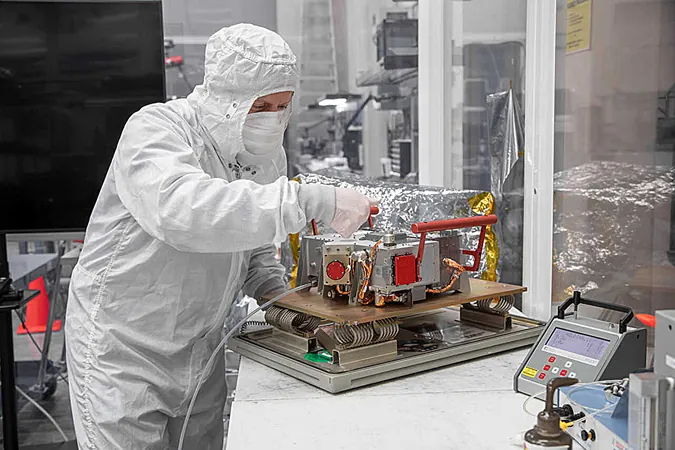
New Cutting-Edge Instruments Set to Unravel the Mysteries of Jupiter's Moon Europa
2024-10-15
Author: Charlotte
On October 14, 2023, NASA launched its highly anticipated Europa Clipper spacecraft from the Kennedy Space Center, equipped with advanced instruments designed to explore the potential habitability of Europa, one of Jupiter's most intriguing moons. With a history steeped in groundbreaking discoveries, this mission aims to unveil whether there are conditions beneath Europa's icy surface that could support life.
Two of the nine scientific instruments aboard, developed by the Southwest Research Institute (SwRI), are the MAss Spectrometer for Planetary EXploration (MASPEX) and the Ultraviolet Spectrograph (Europa-UVS). These state-of-the-art tools will gather crucial data to further investigate Europa's enigmatic environment. Notably, evidence from NASA's Galileo mission in the 1990s suggested that Europa possesses a vast ocean of liquid water confined beneath a thick crust of ice, potentially holding more water than that of Earth itself.
Dr. Jim Burch, the principal investigator of MASPEX, highlighted the instrument's groundbreaking capabilities, stating, “MASPEX has a mass resolution 50 times finer than any previous space instruments. It can differentiate between molecules of nearly identical masses and analyze isotopes, which is critical in assessing the moon’s habitability.”
The Europa-UVS, an advanced ultraviolet spectrograph, aims to locate plumes that may originate from cracks in Europa's surface. Dr. Kurt Retherford, principal investigator for the UVS instrument, explained its mission: “We will analyze the composition and chemistry of Europa’s atmosphere, which can provide insights into the nature and structure of subsurface water reservoirs.”
One of the most exciting aspects of this mission involves the potential collaboration with another UVS instrument currently aboard the European Space Agency's Jupiter Icy Moons Explorer (Juice), which is designed to study Ganymede and will ultimately fly past Europa. Having both UVS instruments operating in the Jupiter system opens a gateway to exciting comparative studies.
NASA's Europa Clipper, the largest solar-powered spacecraft dedicated to a planetary mission, will embark on a journey comprising nearly 50 flybys of Europa, ranging in altitude from 16 miles (25 kilometers) to 1,700 miles (2,700 kilometers). Over a four-year period, the spacecraft will gather exceptionally detailed data that may answer profound questions about the potential for extraterrestrial life in our solar system.
In the scientific community, a collaboration of esteemed researchers from institutions including SwRI, SETI, and various universities across the globe are poised to contribute to this monumental mission. These collective efforts could potentially redefine our understanding of Europa and its habitability, shaping the future of astrobiology for generations to come.
Stay tuned as we follow this momentous journey into the depths of Europa, where secrets of the universe may be waiting to be uncovered!









 Brasil (PT)
Brasil (PT)
 Canada (EN)
Canada (EN)
 Chile (ES)
Chile (ES)
 España (ES)
España (ES)
 France (FR)
France (FR)
 Hong Kong (EN)
Hong Kong (EN)
 Italia (IT)
Italia (IT)
 日本 (JA)
日本 (JA)
 Magyarország (HU)
Magyarország (HU)
 Norge (NO)
Norge (NO)
 Polska (PL)
Polska (PL)
 Schweiz (DE)
Schweiz (DE)
 Singapore (EN)
Singapore (EN)
 Sverige (SV)
Sverige (SV)
 Suomi (FI)
Suomi (FI)
 Türkiye (TR)
Türkiye (TR)